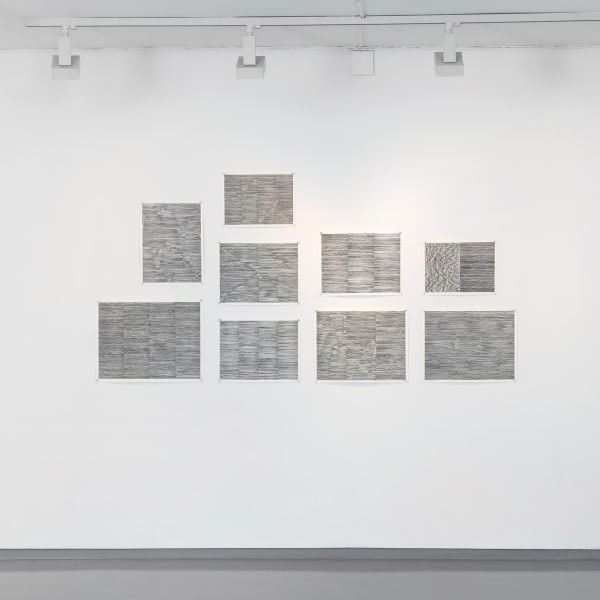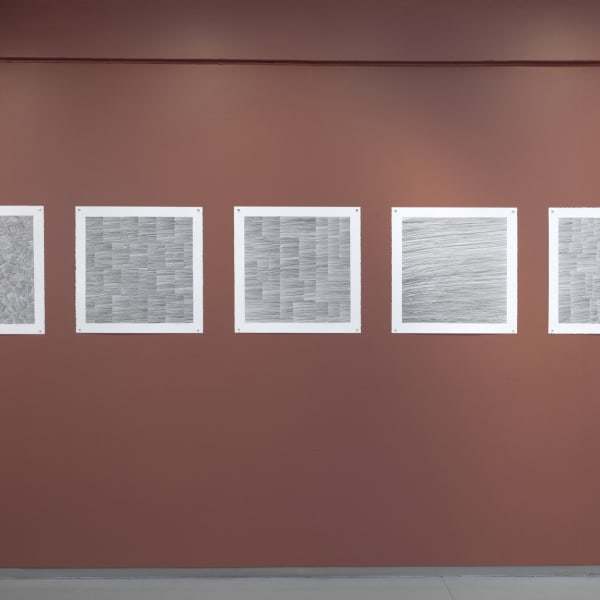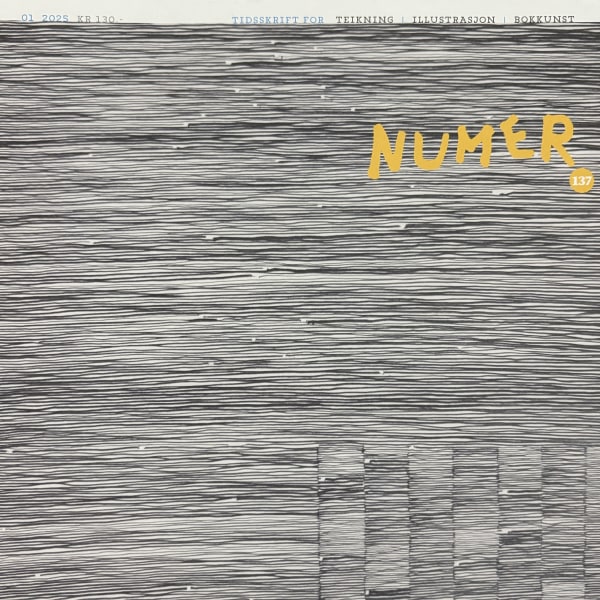Inger Johanne Grytting: Three Decades in Drawing: A Retrospective at Tegnerforbundet, Oslo, Norway
-
 Inger Johanne Grytting: Three Decades in Drawing | Installation View
Inger Johanne Grytting: Three Decades in Drawing | Installation View -
 Inger Johanne Grytting: Three Decades in Drawing | Installation View
Inger Johanne Grytting: Three Decades in Drawing | Installation View -
 Inger Johanne Grytting: Three Decades in Drawing | Installation View
Inger Johanne Grytting: Three Decades in Drawing | Installation View -
 Inger Johanne Grytting: Three Decades in Drawing | Installation View
Inger Johanne Grytting: Three Decades in Drawing | Installation View -
 Inger Johanne Grytting: Three Decades in Drawing | Installation View
Inger Johanne Grytting: Three Decades in Drawing | Installation View -
 Inger Johanne Grytting: Three Decades in Drawing | Installation View
Inger Johanne Grytting: Three Decades in Drawing | Installation View -
 Inger Johanne Grytting: Three Decades in Drawing | Installation View
Inger Johanne Grytting: Three Decades in Drawing | Installation View -
 Inger Johanne Grytting: Three Decades in Drawing | Installation View
Inger Johanne Grytting: Three Decades in Drawing | Installation View -
 Inger Johanne Grytting: Three Decades in Drawing | Installation View
Inger Johanne Grytting: Three Decades in Drawing | Installation View -
 Inger Johanne Grytting: Three Decades in Drawing | Installation View
Inger Johanne Grytting: Three Decades in Drawing | Installation View -
 Inger Johanne Grytting: Three Decades in Drawing | Installation View
Inger Johanne Grytting: Three Decades in Drawing | Installation View -
 Inger Johanne Grytting: Three Decades in Drawing | Installation View
Inger Johanne Grytting: Three Decades in Drawing | Installation View -
 Inger Johanne Grytting: Three Decades in Drawing | Installation View
Inger Johanne Grytting: Three Decades in Drawing | Installation View -
 Inger Johanne Grytting: Three Decades in Drawing | Installation View
Inger Johanne Grytting: Three Decades in Drawing | Installation View -
 Inger Johanne Grytting: Three Decades in Drawing | Installation View
Inger Johanne Grytting: Three Decades in Drawing | Installation View -
 Inger Johanne Grytting: Three Decades in Drawing | Installation View
Inger Johanne Grytting: Three Decades in Drawing | Installation View
Inger Johanne Grytting
Inger Johanne Grytting was born in 1949 in Svolvær, Norway, and moved to New York in 1972, where she spent the majority of her career. She studied at City College of New York, eventually working as an assistant to the sculptor Chaim Gross. While painting dominated her practice throughout the 1980s, it was drawing that became her primary form of expression from the 1990s onward. For over forty years in New York, Grytting worked alongside her husband, Mark Jay Mirsky, at the literary magazine Fiction. Grytting served as the art director, while Mirsky was the editor-in-chief. During this time, they established strong connections between writers and visual artists on an international level.
Drawing
Inger Johanne Grytting primarily works with pencil on paper, and her artworks are characterized by a meditative repetition of lines. Small variations create a sense of subtle rhythm and energy. Through a minimalist approach, she explores the limits of drawing and the imperfections of the human hand.
For Grytting, drawing is an introspective process—a visual dialogue in which she explores subconscious inner states, thoughts, and emotions. Each drawing becomes an ongoing internal conversation, where lines coalesce into a visual language that expresses personal experiences. The act of drawing allows the artist to uncover aspects of herself, with every line serving as a physical trace of this journey of discovery.
Her drawings from the 1990s balanced figurative and abstract elements. During this period, Grytting examined how she could capture tension in two-dimensional images. A recurring theme in these works was the depiction of objects bound together by knots and lines, creating connections between various points. Knots, in their simultaneous complexity and simplicity, represent an artistic exploration of pictorial space through fragmented, yet deliberately constructed elements. The drawings visually convey how tension can be expressed on a flat surface.
Around 2004, a significant development occurred in Grytting’s artistic practice. She began exploring how the material properties of drawing tools could influence the visual expression—a process that gradually led her toward abstraction. Freeing herself from recognizable forms, she embraced a more meditative repetition of lines. The lines themselves became increasingly important, and through repeating compositions she found a means to strengthen and explore this expression.
Process and Materials
Grytting primarily works with pencil on paper, and her relationship with the material is just as important as the final visual result. She has a preference for soft graphite pencils, particularly 8B Faber-Castell pencils, which respond well to the pressure of her hand. She often draws on Rives Stonehenge paper, a lightly porous surface that offers subtle resistance to the point of the pencil. When the point eventually breaks, she continues until the wood of the pencil meets the paper. The continuity of the lines is interrupted at this break. This drawing process creates momentary gaps and irregularities in the work, a unique effect Grytting describes as having a star-like quality. Her choice of materials allows her to create lines that vary in thickness and intensity depending on the pressure she applies and the speed of her hand. These material choices are more than just technical aspects; they are an integral part of the tactile dialogue between hand and paper, which reveals not only the composition of the drawing, but also the emotional states that manifest through the lines.
When Grytting begins a new work, she is fully immersed in its production. She draws for several hours at a time, and if she does not feel completely engaged in the drawing, she may pause to reassess the composition or plan new approaches. Her process balances control and spontaneity—while repetition provides a sense of freedom, no image can ever be exactly repeated. Each drawing is unique, and her work invites an acceptance of unpredictability in both material and process.
Three Decades in Lines
This retrospective exhibition is dedicated to Grytting’s long-standing relationship with drawing. Her deep and dynamic engagement with the medium remains strong to this day, and she continues to refine and develop her personal approach. The exhibition invites the audience to immerse themselves in her visual language, where every line carries traces of time, thought, and emotion. Grytting’s exhibition history is extensive, with her works having been shown both nationally and internationally. She has exhibited at venues such as Oslo Kunstforening, the Northern Norwegian Art Museum, Galleri Svalbard, the North Norwegian Art Center, and the Vigeland Museum. Her works are part of several private and public collections, including the National Museum in Oslo, Stavanger Art Museum, and the Northern Norwegian Art Museum. Today, Grytting is represented by Westwood Gallery NYC. As a significant figure in both Norwegian and international contemporary art, she has established her position through a continuous exploration of the pencil as an artistic tool.
The exhibition Inger Johanne Grytting: Three Decades in Drawing is a tribute to an artist who, for decades, has regarded the pencil as an extension of her body. Each line testifies to a deep fascination with materiality and creative process. The exhibition is a collaboration between Inger Johanne Grytting, Westwood Gallery in New York, and Tegnerforbundet – the Norwegian Drawing Center.
-

Life's Imprint
In Inger Johanne Grytting's drawings, the lines meet in danceKåre Bulie, Klassekampen, 21 May 2025 -

A look back at a subtle artistry characterized by a primal joy in making a mark
Inger Johanne Grytting: Three Decades in Drawing RetrospectiveSimon K. Nielsen, Kunstavisen, 30 Apr 2025 -

Inger Johanne Grytting: Three Decades in Drawing
Exclusive Interview with the ArtistLene Fjørtoft, Numer, 27 Mar 2025

















